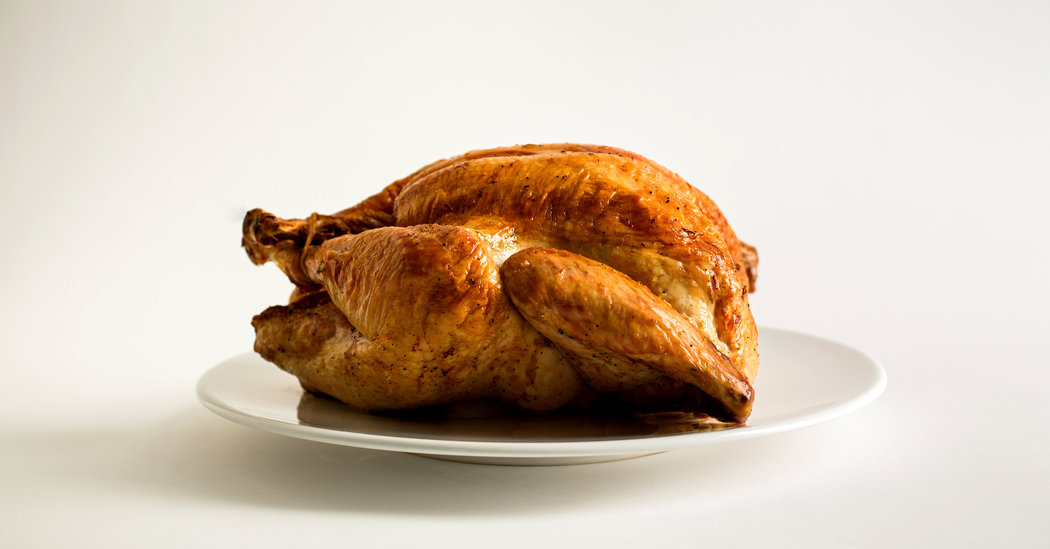Happy Thanksgiving! You’re about to enjoy one of the most wonderful meals of the year with family and friends. And you’re probably looking forward to a plate full of food that you, or someone you care about, spent a lot of time preparing.
Or maybe they ordered it from a caterer. That’s fine, we don’t judge.
As you give thanks for the bounty of this meal and the company you share it with, spend some time thinking about some of the scientific facts that made your meal possible. Biology. Chemistry. Physics. It’s all there on your plate.
Here are some things we’ve learned about your Thanksgiving meal. If all else fails, these facts might make for nice conversation starters with that step-cousin you only see once a year.
Domesticating dark meat and white meat
While turkeys share a name with the country at the crossroads of Europe and the Middle East, they originated in the Americas. And people have been raising them for food and other reasons longer than we previously knew.
In 2016, scientists published new research showing that the Zapotec people living in what is now Mexico kept whole turkey eggs in their households as long ago as 400 to 500 A.D., using them for ritualistic purposes. The discovery pushed back the earliest known domestication of turkeys by 100 to 200 years.
“It’s the earliest solid evidence of domesticated turkey in southern Mexico that we have to date,” said Gary Feinman, an archaeologist from the Field Museum in Chicago, in an interview last year. Learn more about the origins of turkeys.
Dressed to kill
Is it safe to cook stuffing inside your turkey? It’s possible, according to the Agricultural Department, but it’s not without risk. Some years back, a chemist named Robert L. Wolke explained why this was a physics problem:
A turkey is shaped physically like a big round ball, and when you’re roasting it the heat has to come in from the outside. That makes the inner parts of the turkey the last to become hot enough to kill dangerous bacteria; the U.S.D.A. recommends at least 165 degrees.
But by the time the inner thighs get to that temperature, the breast is overcooked. And if the bird is stuffed, the stuffing may never get that hot, and at lower temperatures stuffing is a wonderful growth medium for bacteria.
There are a lot of other good ways to make stuffing, or dressing; perhaps you should try one. Read more of Dr. Wolke’s interview.
Red splashes of biochemistry
You’re probably enjoying some cranberry sauce with your turkey. Perhaps you’re eating roasted beets, too. They’re both red, but the chemical processes that give them their hues are completely unrelated.
Cranberries are made red by pigments called anthocyanins. These compounds are a common source of red coloration in the plant kingdom, from fall foliage to raspberries, apples and cherries.
But beets have something different going on.
Their brilliant reds result from substances called betalains. Scientists recently reported that in their evolutionary history, beets figured out how to harness a surplus of an amino acid called tyrosine. This is the same substance that helps opium poppies produce their narcotic effect. But while most plants switch off the process that yields tyrosine, the beet keeps it going until it becomes such a beautiful shade of red.
Get the full story on the chemistry that makes beets so red.
A helping of sly vegetables
Hopefully you’re eating something green, too. Perhaps it’s a side of brussels sprouts. They may be the craftiest thing on your plate.
Scientists found that when a brussels sprout plant detects eggs laid on its surface by a type of butterfly, it responds by manufacturing a chemical. That chemical sends a signal to parasitic wasps, sort of like a last-minute invitation to a Thanksgiving meal. The wasps lay their own eggs, which eat the growing butterflies, and the brussels sprouts are saved.
Not that we’re saying that digging into those delicious green orbs will attract wasps. Enjoy!
Here’s an overview about that and other surprising things that plants can do.
Hope you left space for dessert
You shouldn’t? You must. Here’s a nice slice of pumpkin pie. We baked it ourselves.
Instead of the whipped topping, we’ll offer you this fact: your dessert is the product of an evolutionary quirk that transpired some 100 million years ago.
Pumpkins, along with their cucurbitaceae family members like squash, watermelons and cucumbers, were born when the genome of a melon-like fruit duplicated itself. As we explained a couple of months ago in this article, this act of duplication set off a course of adaptations to environmental changes. Millions of years later, the descendants of that fruit ended up in a can that was pried open, poured in a pie crust and baked with love so you’d have something delicious to finish your meal.
There’s still some left. We’ll wrap up a slice for you to take home.
Before you say good night
Now that you’ve finished the meal, it’s time to take up one of our most important Thanksgiving traditions: blaming the tryptophan for your drowsiness.
Blame something else.
Tryptophan is one amino acid among many in turkey, and in combination with the others, its soporific effects are constrained.
The real source of your fluttering eyelids? Too many yams. Too many mashed potatoes. Too many brussels sprouts. Too many biscuits. That second slice of pie. Find the full details explaining why tryptophan is not to blame in this quick article.
Better ask for a cup of coffee before you get in the car and go through the woods and over the river to get home.
____
Like the Science Times page on Facebook.| Sign up for the Science Times newsletter.
Source: Read Full Article
